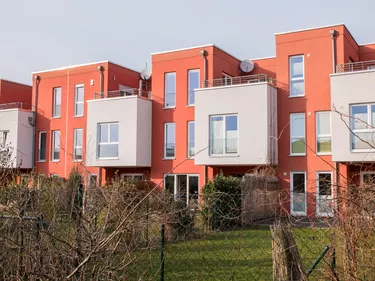
The Department of Housing and Urban Development funds low-income housing programs. HUD provides money to housing authorities to administer programs, such as the Housing Choice Voucher Program and public housing. Low-income housing helps families and individuals who otherwise can't afford safe and decent housing, as well as seniors and the disabled. HUD sets income limits annually for these programs.
Three Income Categories
Video of the Day
Low-income housing participants may not earn more than a certain percentage of their area's median income. Applicants must fall into one of three income groups to qualify for HUD's affordable housing programs:
Video of the Day
- Low-income renters make 80 percent or less than the median income.
- Very low-income renters make 50 percent or less than the median income.
- Extremely low-income renters make 30 percent or less than the median income.
Low-income limits vary by location. Higher-priced areas of the country tend to have higher median income limits, therefore, HUD allows higher limits in these areas. Limits also vary by household size. HUD sets higher income limits for larger families.
HUD's Main Programs
Seventy-five percent of housing choice vouchers go to extremely low-income renters, according to HUD. The Housing Choice Voucher Program is also known as Section 8. This program gives tenants vouchers for use on privately owned rental housing. The local public housing authority pays a portion of the tenant's rent directly to the landlord. Tenants generally pay no more than 30 percent of their adjusted gross income in rent. Section 8 rentals range from apartments to detached single-family homes. Landlords must be approved to participate in the program, and their properties must meet strict health and safety standards.
Low-income tenants, the elderly and the disabled may qualify for government-owned public housing. Housing authorities own properties, many of which are apartment projects, and rent them to low-income tenants.
Housing Authorities Determine Income Eligibility
The public housing authority reviews applicant income annually. The authority calculates total income for all household earners ages 18 and older. It also adjusts income under certain circumstances. For example, the authority can exclude:
- $400 for a person with a disability or an elderly household member.
- $480 per dependent.
- Some medical expenses if the head of household has a disability.
These deductions from income make it easier for renters to qualify for low-income housing, as it reduces their income to meet limits. Each housing authority decides which income calculations to use for a household. Renters may also pay as little as $25 to $50 a month in rent, or an amount designated by welfare, if a renter also receives public assistance.